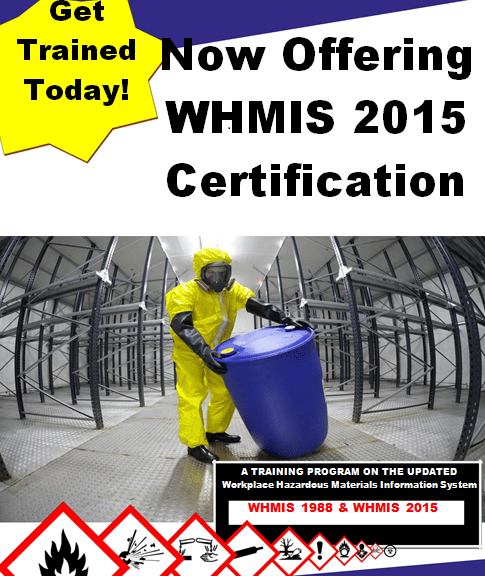
WHMIS 2015 – An Overview
WHMIS Overview
WHMIS first came into effect on October 31, 1988. It was created to address the rights of Canadian workers, to know about health and safety hazards associated with chemicals that they use or may come in contact with in the workplace.
- In February 2015, Canada aligned WHMIS with the Globally Harmonized System of Classification and Labeling of Chemicals.
- GHS was developed as an international initiative to bring global standardization to chemical hazard classification and communication.
- While the adoption of GHS has resulted in some changes to the Workplace Hazardous Materials Information System, it offers the same, if not additional protection to workers.
What is GHS?
GHS is an international initiative to standard chemical hazard classification and communication globally. GHS has been adopted by many of Canada’s trading partners; including the USA.
WHMIS is a national hazard communication system that provides information on the safe use of hazardous products in Canadian workplaces. GHS has not replaced WHMIS. WHMIS has incorporated GHS elements, resulting in NEW standardized:
- Classification Criteria
- Label Requirements
- Safety Data Sheets (SDS) requirements (formerly known as MSDS)
Classification
Classification criteria have changed for WHMIS 2015. WHMIS retains the same level of protection it previously offered, and incorporates some new hazard classes, e.g. Aspiration Hazard.
Supplier Labels
Supplier labels have a few new requirements. Most of the label elements are standardized. Most hazard classes and categories have a prescribed signal word, hazard statements, pictogram(s), and precautionary statemen(s). Supplier labels continue to be required in both English and French.
Safety Data Sheets (SDSs)
SDSs follow a standard 16-section format with specific information requirements. SDSs continue to be required in both English and French. The SDSs must be accurate at the time of sale or import, for each sale or import.
Roles, Responsibilities and Duties
The current roles and responsibilities for suppliers, employers and workers remain unchanged in WHMIS 2015. Suppliers still provide labels and SDSs to customers. Employers still ensure that all hazardous products are properly labelled and make up-to-date SDSs readily available to workers. Employers also provide worker education and training and ensure appropriate control measures to protect the health and safety of workers. Workers still participate in WHMIS training programs, take necessary steps to protect themselves and their co-workers, and participate in identifying and controlling hazards.
Transition
To allow time for suppliers, employers and workers to adjust to the new system, WHMIS 2015 implementation will take place over a multi-year transition period.
